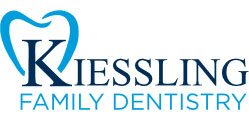What is Periodontal Disease?
Periodontal Disease, or gum disease, is a serious infection of the soft tissue. Periodontal means “Around the tooth”. Left untreated, gum disease in its advanced stages can progress and destroy the jawbone that supports the teeth. Periodontal disease is the leading cause of tooth loss in adults.
Periodontitis is largely preventable with proper hygiene. A balanced diet, brushing at least twice a day, flossing and regular dental exams can prevent or successfully treat periodontal disease in the early stages.
Signs and Symptoms:
- Bleeding Gums
- Loose Teeth
- Bad Breath
- Painful chewing
- Pus around Teeth and Gums
- Receding Gums
- Red and/or puffy Gums
- Tender and/or Discomfort around Gums
There are four stages of Periodontal Disease:
- Gingivitis
- Slight or Early Periodontal Disease
- Moderate Periodontal Disease
- Advanced periodontal Disease.
Gingivitis is a bacterial infection of the gum which an early stage of Periodontal Disease. It is important to note that gingivitis is the only stage of periodontal disease that can be reversed. This is the stage where the bacteria has not yet affected the bone. Regular dental appointments and good hygiene are essential in preventing gingivitis.
Symptoms of Gingivitis:
- Swollen or bleeding gums
- Bad Breath
- Metallic taste in Mouth
More advanced periodontal disease affects not only the gums, but also the bone structure supporting the teeth. Slight Periodontal Disease is a more advanced stage and the gums begin to pull away from the teeth leaving spaces known as “pockets” which leads to infection. At this stage, bacterial infection begins to damage the bone.
